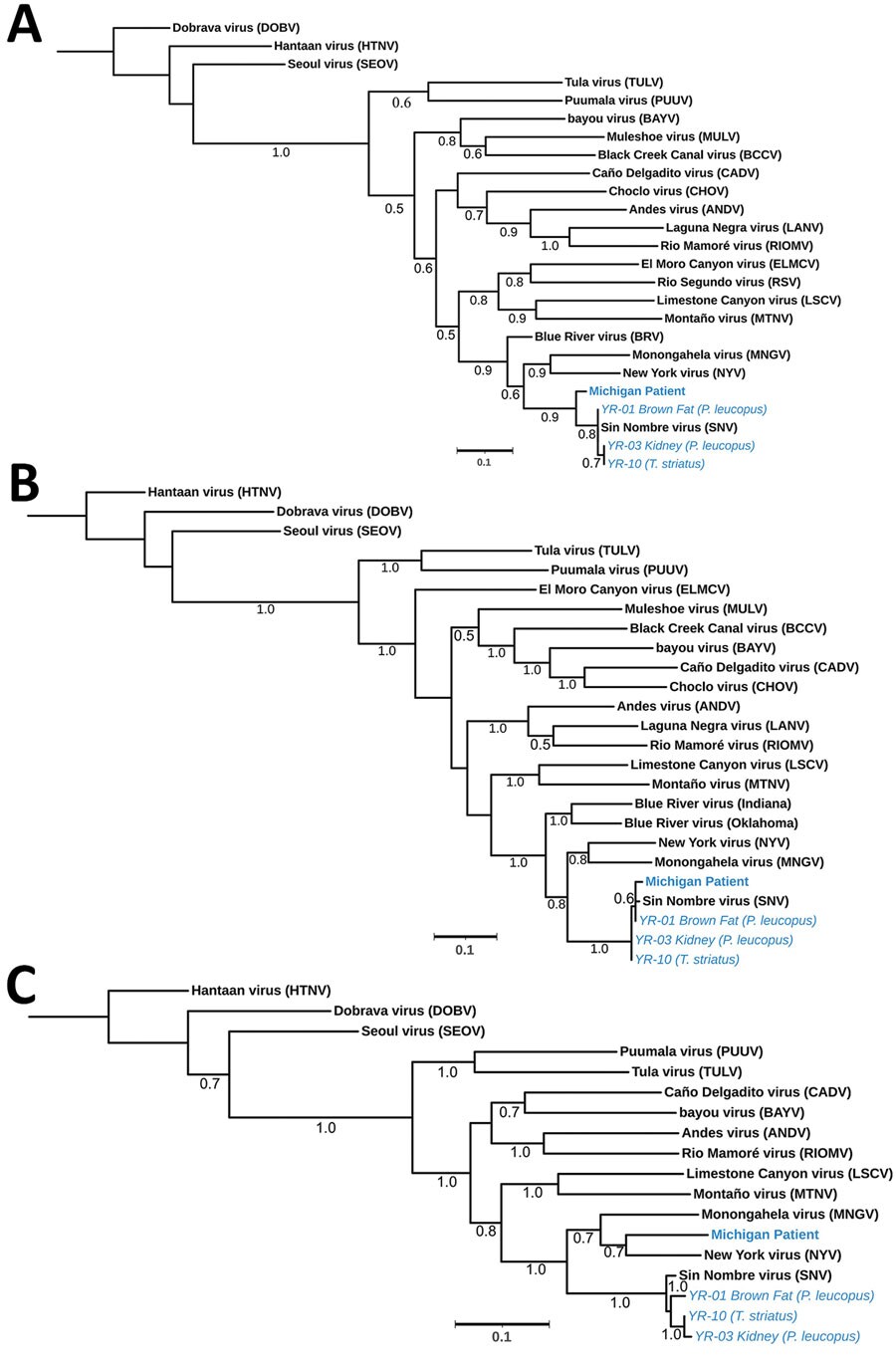Case of Human Orthohantavirus Infection, Michigan, USA, 2021
Samuel M. Goodfellow, Robert A. Nofchissey, Dustin Arsnoe, Chunyan Ye, Seonghyeon Lee, Jieun Park, Won-Keun Kim, Kartik Chandran, Shannon L.M. Whitmer, John D. Klena, Jonathan W. Dyal, Trevor Shoemaker, Diana Riner, Mary Grace Stobierski, Kimberly Signs, and Steven B. Bradfute

Author affiliations: University of New Mexico Health Sciences Center, Albuquerque, New Mexico, USA (S.M. Goodfellow, R.A. Nofchissey, C. Ye, S.B. Bradfute); US Department of Agriculture Animal and Plant Health Inspection Service Wildlife Services–Michigan Program, Okemos, Michigan, USA (D. Arsnoe); Hallym University College of Medicine, Chuncheon, South Korea (S. Lee, J. Park, W.-K. Kim); Albert Einstein College of Medicine, Bronx, New York, USA (K. Chandran); Centers for Disease Control and Prevention, Atlanta, Georgia, USA (S.L.M. Whitmer, J.D. Klena, J.W. Dyal, T. Shoemaker); Michigan Department of Health and Human Services, Lansing, Michigan, USA (D. Riner, M.G. Stobierski, K. Signs)
Main Article
Figure

Figure. Phylogenetic analysis of orthohantavirus sequence fragments from samples taken from a 65-year-old woman in Michigan, USA, and trapped rodents from the likely site of exposure (blue text). Trees displaying the patient small fragment (481 bp) (A), medium fragment (283 bp) (B), and large fragment (377 bp) (C) were aligned against wild-caught rodents near site of exposure and reference sequences. Numbers along branches indicate bootstrap values of 500 replicates. GenBank accession numbers: human patient, OR428177–9; YR-01, brown adipose fat from a Peromyscus leucopus white-footed mouse, OR428180–2; YR-03, kidney tissue from a P. leucopus mouse, OR428183–5; and YR-10, lung tissue from a Tamias striatus Eastern chipmunk, OR428186–8. Scale bars indicate number of substitutions per site.
Main Article
Page created: February 22, 2024
Page updated: March 21, 2024
Page reviewed: March 21, 2024
The conclusions, findings, and opinions expressed by authors contributing to this journal do not necessarily reflect the official position of the U.S. Department of Health and Human Services, the Public Health Service, the Centers for Disease Control and Prevention, or the authors' affiliated institutions. Use of trade names is for identification only and does not imply endorsement by any of the groups named above.
